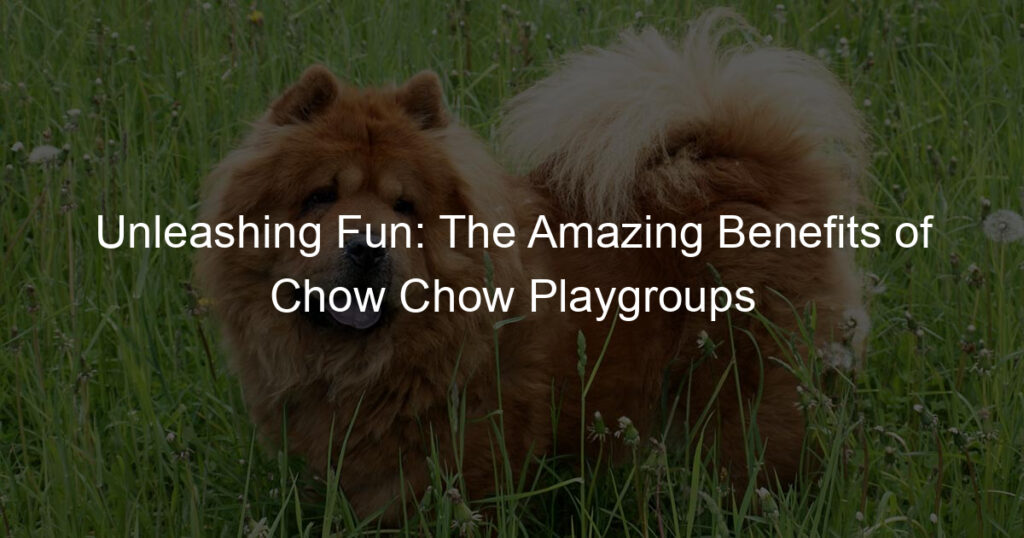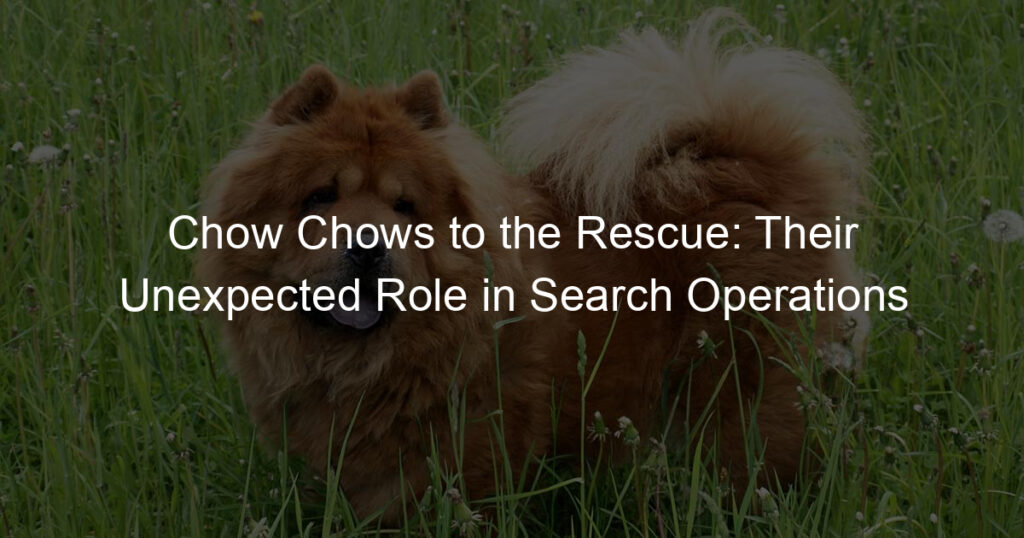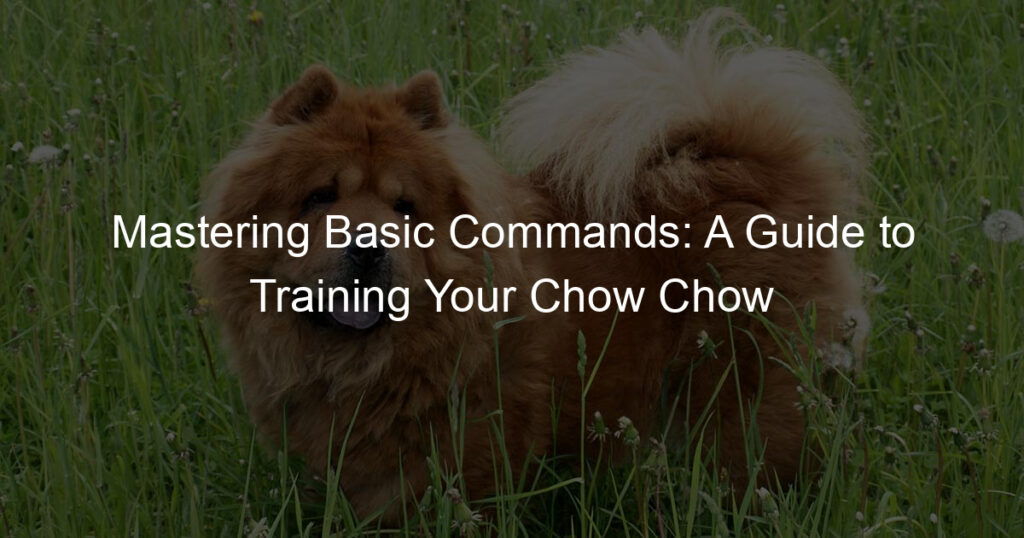Introduction to Chow Chow Communication
Chow Chows, a breed of fluffy, lion-like dogs, are known for their unique and distinctive ways of communicating. Understanding these communication methods is essential for any Chow Chow owner or enthusiast. In this section, we will delve into the fascinating world of Chow Chow communication.
- Understanding the unique nature of Chow Chow breed communication
- Importance of effective communication with Chow Chow
Chow Chows are not your typical breed. They are known for their aloofness and independence, traits that extend to their communication style. Unlike other breeds that may be more vocal, Chow Chows tend to communicate more through body language. For instance, a wagging tail doesn’t always mean they’re happy. It could also mean they’re alert or excited. Similarly, a Chow Chow may show affection not by licking or jumping, but by leaning against you or following you around the house. Understanding these subtle cues can help you better understand your Chow Chow’s needs and emotions. Learn more about Chow Chow breed here.
Effective communication with your Chow Chow is crucial for a harmonious relationship. It can help you understand their needs, prevent potential behavioral issues, and strengthen your bond. For instance, if you can recognize when your Chow Chow is feeling anxious or threatened, you can take steps to alleviate their stress. Similarly, understanding their unique ways of showing affection can help you respond in kind, fostering a deeper bond. Remember, communication is a two-way street. Just as you’re learning to understand your Chow Chow, they’re also learning to understand you. So, be patient, consistent, and positive in your interactions.
In the following sections, we will delve deeper into understanding Chow Chow behavior and training techniques. Stay tuned to become a master of Chow Chow chatter!
Understanding Chow Chow Behavior
Chow Chows are a unique breed with distinct behaviors that set them apart from other dogs. Understanding these behaviors is crucial to building a strong, loving relationship with your Chow Chow.
Recognizing Common Chow Chow Behaviors
Let’s delve into some common behaviors of Chow Chows and what they mean.
- Chow Chow’s Unique Body Language
- Common Chow Chow Vocalizations
Chow Chows are known for their stoic and reserved demeanor. They often stand tall and proud, with a slight tilt of their head when they are curious or interested. Their tail, usually curled over their back, may wag slightly when they are happy or excited. When a Chow Chow lowers its tail and flattens its ears, it could be a sign of fear or submission. It’s important to pay attention to these subtle cues to understand your Chow Chow’s mood and feelings.
Chow Chows are not typically vocal dogs, but they do have a few distinct sounds. A low growl usually signals a warning or discomfort. On the other hand, a high-pitched yelp may indicate pain or distress. Some Chow Chows may also “talk” or “sing” to their owners, using a series of howls and barks to communicate. Remember, each Chow Chow is unique, so their vocalizations may vary.
Understanding your Chow Chow’s behavior is a journey, but with patience and observation, you can learn to communicate effectively with your furry friend. Remember, every dog is unique, and what works for one Chow Chow may not work for another. The key is to observe, understand, and respond to your Chow Chow’s unique behaviors and needs.
Interpreting Chow Chow Behavior
Understanding the behavior of your Chow Chow in different situations can be a rewarding and enlightening experience. This breed is known for its unique characteristics and behaviors, which can sometimes be misinterpreted by those unfamiliar with the breed. Here, we will delve into the nuances of Chow Chow behavior and provide a case study of a Chow Chow in a multi-dog household.
- Understanding Chow Chow’s behavior in different situations
- Case Study: Chow Chow behavior understanding in a multi-dog household
Chow Chows are often seen as aloof and independent, but this does not mean they are unaffectionate or unresponsive. They are simply more reserved than other breeds. In new or unfamiliar situations, a Chow Chow may exhibit caution or hesitance. This is not a sign of fear, but rather a display of their discerning nature. They prefer to assess their surroundings before engaging fully. This behavior is a testament to their intelligence and discernment.
When interacting with their owners, Chow Chows are often affectionate and loyal. They are known to form strong bonds with their families and are protective of their loved ones. However, they may not be as outgoing or playful as other breeds, preferring quieter activities and more relaxed environments. Understanding this can help you better cater to your Chow Chow’s needs and preferences.
Let’s consider the case of Bella, a Chow Chow living in a household with two other dogs. Initially, Bella was reserved and kept her distance from the other dogs. However, with time and patience, she began to interact more with her canine siblings.
Her owners noticed that Bella preferred to observe the other dogs from a distance before joining in their activities. She was not aggressive or fearful, but simply cautious. Once she felt comfortable, she would engage in play and social interactions. This behavior is typical of Chow Chows and demonstrates their discerning and thoughtful nature.
Understanding Bella’s behavior helped her owners create a more harmonious multi-dog household. They learned to give Bella the space and time she needed to adjust to new situations, and to respect her unique personality and preferences. This case study illustrates the importance of understanding and respecting the unique behaviors and characteristics of the Chow Chow breed.
In conclusion, understanding and interpreting Chow Chow behavior requires patience, observation, and respect for their unique characteristics. With time and effort, you can build a strong and rewarding relationship with your Chow Chow, based on mutual understanding and respect.
Chow Chow Training Techniques
Training a Chow Chow can be a rewarding experience, but it requires the right approach. Here, we delve into effective training methods that can help you and your Chow Chow build a strong bond.
Effective Chow Chow Training Methods
There are several methods you can use to train your Chow Chow. However, two techniques stand out as particularly effective:
- Positive reinforcement techniques for Chow Chows
- Training techniques for Chow Chows: Consistency and patience
Positive reinforcement is a powerful tool in dog training. It involves rewarding your Chow Chow for good behavior, which encourages them to repeat it. Rewards can include treats, praise, or a favorite toy. For example, if your Chow Chow sits when you command, give them a treat or a pat on the head. This will help them associate the command with a positive outcome, encouraging them to obey in the future.
Consistency and patience are key when training a Chow Chow. This breed can be stubborn, so it’s important to be consistent with your commands and rewards. If you reward your Chow Chow for sitting one day, but not the next, they may become confused. Similarly, patience is crucial. Training takes time, and it’s important to remember that progress may be slow. However, with consistent effort and patience, your Chow Chow will eventually learn to respond to your commands.
By using these techniques, you can effectively train your Chow Chow and build a strong, respectful relationship with them.
Improving Communication with Chow Chow Through Training
Training your Chow Chow is not just about teaching them to sit, stay, or fetch. It’s about enhancing the bond between you and your furry friend. It’s about understanding each other better. Let’s delve into how training can improve communication with your Chow Chow.
- Using training to enhance understanding between you and your Chow Chow
- Key Takeaway: The role of training in effective communication with Chow Chow
Training your Chow Chow is like learning a new language. It’s a way for you to understand their needs, wants, and behaviors better. It’s also a way for them to understand your expectations and commands. For instance, when you teach your Chow Chow to sit, you’re not just teaching them a trick. You’re teaching them to understand a command and respond to it. This enhances your communication and understanding with each other.
Moreover, training sessions can be a fun and engaging way for you to spend quality time with your Chow Chow. This can strengthen your bond and make your Chow Chow more receptive to your commands. Remember, a happy and engaged Chow Chow is more likely to listen and respond to you.
Training plays a pivotal role in effective communication with your Chow Chow. It’s a tool for you to understand their behavior and for them to understand your commands. It’s a way for you to build a strong bond with your Chow Chow and enhance your communication with them.
Remember, training is not a one-time thing. It’s a continuous process that requires patience and consistency. The more time you spend training your Chow Chow, the better your communication with them will be. So, start training your Chow Chow today and see the difference it makes in your communication with them.
In conclusion, training is not just about teaching your Chow Chow tricks. It’s about enhancing your communication and understanding with them. So, invest time in training your Chow Chow and reap the benefits of improved communication.
Chow Chow Whisperer Techniques
Chow Chow whisperer techniques are a unique set of communication methods that can significantly enhance the bond between you and your Chow Chow. These techniques are based on understanding the breed’s specific behaviors and responding in a way that promotes trust and mutual respect. Let’s delve into the art of communicating with Chow Chows.
Mastering the Art of Communicating with Chow Chow
Mastering the art of communicating with your Chow Chow involves understanding their unique language and responding in a way that they understand. This process is often referred to as ‘Chow Chow whispering’.
- Understanding the concept of a Chow Chow whisperer
- Examples of effective Chow Chow whisperer techniques
A Chow Chow whisperer is someone who has a deep understanding of the breed’s behavior and communication style. They can interpret the subtle signs and signals that a Chow Chow uses to express its feelings and intentions. This understanding allows them to respond in a way that the Chow Chow understands and appreciates, leading to a stronger bond and a happier, more contented dog.
Effective Chow Chow whisperer techniques involve understanding and responding to the Chow Chow’s unique language. For example, a Chow Chow might show its happiness by wagging its tail and leaning into you. A whisperer would respond by giving the dog a gentle pat or a treat, reinforcing the positive behavior.
On the other hand, if a Chow Chow shows signs of discomfort or fear, such as growling or backing away, a whisperer would give the dog space and try to reassure it in a calm and gentle manner. This response shows the dog that its feelings are understood and respected, which can help to build trust and reduce fear or aggression.
In conclusion, mastering the art of communicating with your Chow Chow involves understanding their unique language and responding in a way that they understand and appreciate. This process, often referred to as ‘Chow Chow whispering’, can significantly enhance the bond between you and your dog and lead to a happier, more contented Chow Chow.
Applying Chow Chow Whisperer Techniques in Everyday Life
Once you’ve mastered the art of communicating with your Chow Chow, it’s time to apply these techniques in your everyday interactions. Here are some practical tips and a case study to guide you on this journey.
- Practical tips for implementing Chow Chow whisperer techniques
- Consistency is Key: Be consistent in your commands and actions. This helps your Chow Chow understand what you expect from them.
- Positive Reinforcement: Reward your Chow Chow for good behavior. This could be a treat, a toy, or simply some extra cuddle time.
- Patience: Remember, your Chow Chow may not understand your commands immediately. Be patient and keep practicing.
- Body Language: Pay attention to your Chow Chow’s body language. It can give you clues about their mood and needs.
- Case Study: A successful application of Chow Chow whisperer techniques
Understanding your Chow Chow’s behavior is the first step towards effective communication. Here are a few tips to help you apply whisperer techniques:
Meet John, a Chow Chow owner who successfully applied whisperer techniques to improve his relationship with his pet, Bella.
John noticed that Bella was often anxious and unresponsive to commands. After researching, he discovered the concept of a Chow Chow whisperer and decided to try it out.
He started by observing Bella’s behavior and body language. He noticed that Bella would often tuck her tail between her legs, a sign of fear or anxiety. He also noticed that she would become more relaxed when he spoke to her in a calm, soothing voice.
John decided to consistently use this calm voice when giving Bella commands. He also rewarded her with treats and praise when she followed the commands. Over time, Bella became more responsive and less anxious.
This case study illustrates the power of Chow Chow whisperer techniques. By understanding Bella’s behavior and adjusting his approach, John was able to improve their relationship and Bella’s overall well-being.
In conclusion, applying Chow Chow whisperer techniques in your everyday life can greatly improve your relationship with your pet. It requires patience, consistency, and a deep understanding of your Chow Chow’s behavior. But the results, as seen in John’s case, are well worth the effort.
Conclusion: The Journey to Mastering Chow Chow Chatter
As we wrap up our discussion on the unique communication style of the Chow Chow breed, it’s essential to remember that understanding your pet is a continuous journey. It requires patience, persistence, and a deep love for these fluffy companions. Let’s take a moment to recap what we’ve learned and look forward to the ongoing journey of understanding and communicating with your Chow Chow.
- Recap of effective communication techniques with Chow Chow
- The ongoing journey of understanding and communicating with your Chow Chow
We’ve explored various techniques to communicate effectively with your Chow Chow. We learned that understanding their behavior is the first step. This includes recognizing their body language, vocal cues, and even their unique ‘Chow Chow chatter’. We also discussed the importance of training techniques, including positive reinforcement and consistency. We delved into the ‘Chow Chow Whisperer’ techniques, which involve a deeper understanding and connection with your pet.
Mastering Chow Chow chatter is not a destination, but a journey. It’s an ongoing process that evolves as you spend more time with your pet. Remember, every Chow Chow is unique, and what works for one might not work for another. Keep observing, keep learning, and keep loving your Chow Chow. Your efforts will surely be rewarded with a deep, meaningful bond with your furry friend.
As the famous dog trainer, Cesar Millan once said, “You don’t always get the dog you want, you get the dog you need.” And if you need a Chow Chow in your life, you’re in for an exciting journey of discovery and companionship. So, keep exploring, keep communicating, and remember – the journey to mastering Chow Chow chatter is a journey of love.














